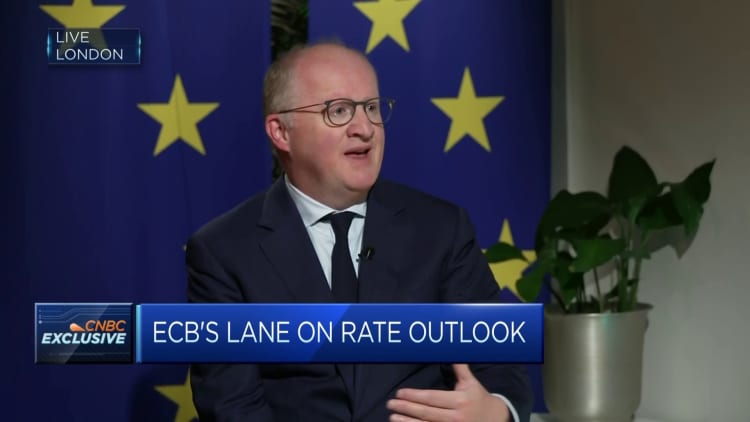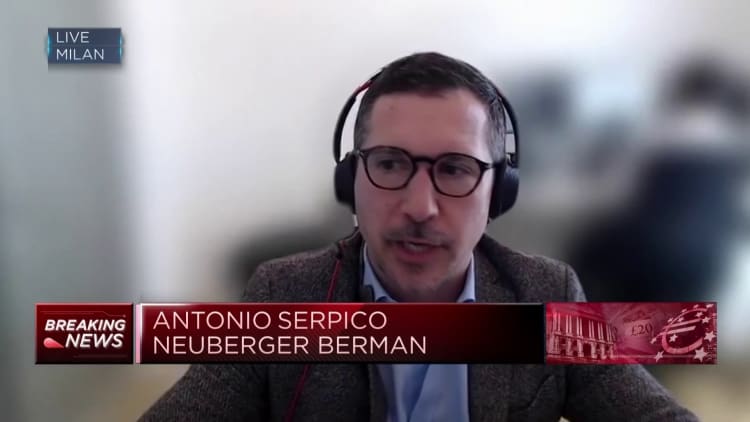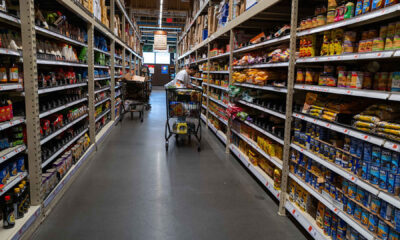The European Central Bank must take its time to get interest rate cuts right and will have a clearer picture of inflationary pressures in June, the institution’s chief economist told CNBC.
“A lot of evidence is accumulating, but what’s also fair to say is that the transition from this holding phase, we’ve been on hold since last September since a substantial hiking cycle, we do have to take our time to get that right, from holding to dialing back restrictions,” Philip Lane told CNBC’s Steve Sedgwick on Thursday.
Lane, a Governing Council member, said the euro zone central bank’s March meeting had been an “important milestone” in the accumulation of evidence, and showed the “disinflation process has been ongoing.” During the meeting, the ECB held rates and released updated macroeconomic projections, which lowered its inflation forecast for this year to 2.3% from 2.7%.
Inflation in the 20-nation bloc eased to 2.6% in February.
In line with the ECB’s March messaging, Lane said that more data was required, particularly around wages, and that the Governing Council would “learn a lot by April, a lot more by June” — the dates of its next two meetings.
In a news conference after the March meeting, ECB President Christine Lagarde said market pricing on the timing of rate cuts — which indicate a start in June as of Thursday — “seems to be converging better” with the central bank’s view.
June emerged as a key date in market commentary, as it’s set to mark the first meeting where the ECB can assess spring data on wage negotiations for the year.
Asked about other colleagues on the ECB’s Governing Council who have suggested rate cuts could take place before the summer, Lane said he believed this was a reference to the second quarter, which would include June.
“I think Q2 is a time when we will be far enough into 2024 to see more of the wage dynamic, to see more of the price pressures.”
He stressed that it was important, in his own role, to “avoid trying to provide calendar guidance to the market.”
“Once we are sufficiently confident that we will get back to target in a sustainable manner, in a timely manner, that’s the right time to move to the next phase,” he said.
Room for profits to come down
Policymakers have repeatedly stressed that many of the causes of the inflationary cycle have subsided, such as the energy price spike and supply chain issues. But they remain concerned about domestic inflationary pressures from corporate profits and wage rises.
Bank of England Governor Andrew Bailey caused controversy in 2022 for suggesting workers should not ask for a pay raise in order to avoid stoking inflation.
Lane said Thursday that, while the ECB’s forecast relied on some moderation in wage growth, it was “important” for people’s inflation-adjusted salaries to improve, and that companies should shoulder lower profits to allow this to happen.
“Wages were not the source of this inflation problem. But in terms of making sure we get back to target, the interplay between wages and profits, our forecast is built on a degree of wage deceleration,” he said.
“It’s important to say, we need to see workers’ real incomes improve, to rebuild, not just this year, [but] the year after. So we allow for higher to normal wage increases.”
Lane added, “But we also need to see, essentially, firms absorbing a fair amount of that in lower profits. Profits were quite high in 2022, there is some room for profits to come down. And that is part of the open questions we have.”
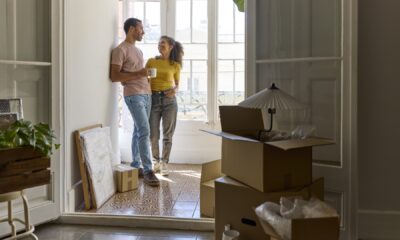
 Personal Finance1 week ago
Personal Finance1 week ago
 Blog Post1 week ago
Blog Post1 week ago
 Economics6 days ago
Economics6 days ago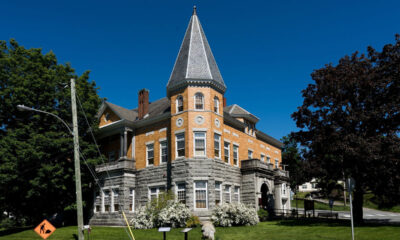
 Economics1 week ago
Economics1 week ago
 Accounting6 days ago
Accounting6 days ago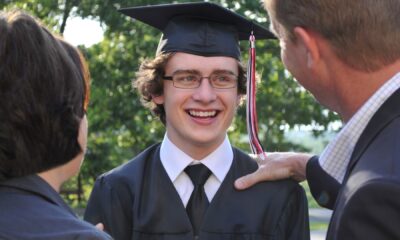
 Personal Finance1 week ago
Personal Finance1 week ago
 Economics6 days ago
Economics6 days ago
 Personal Finance6 days ago
Personal Finance6 days ago

